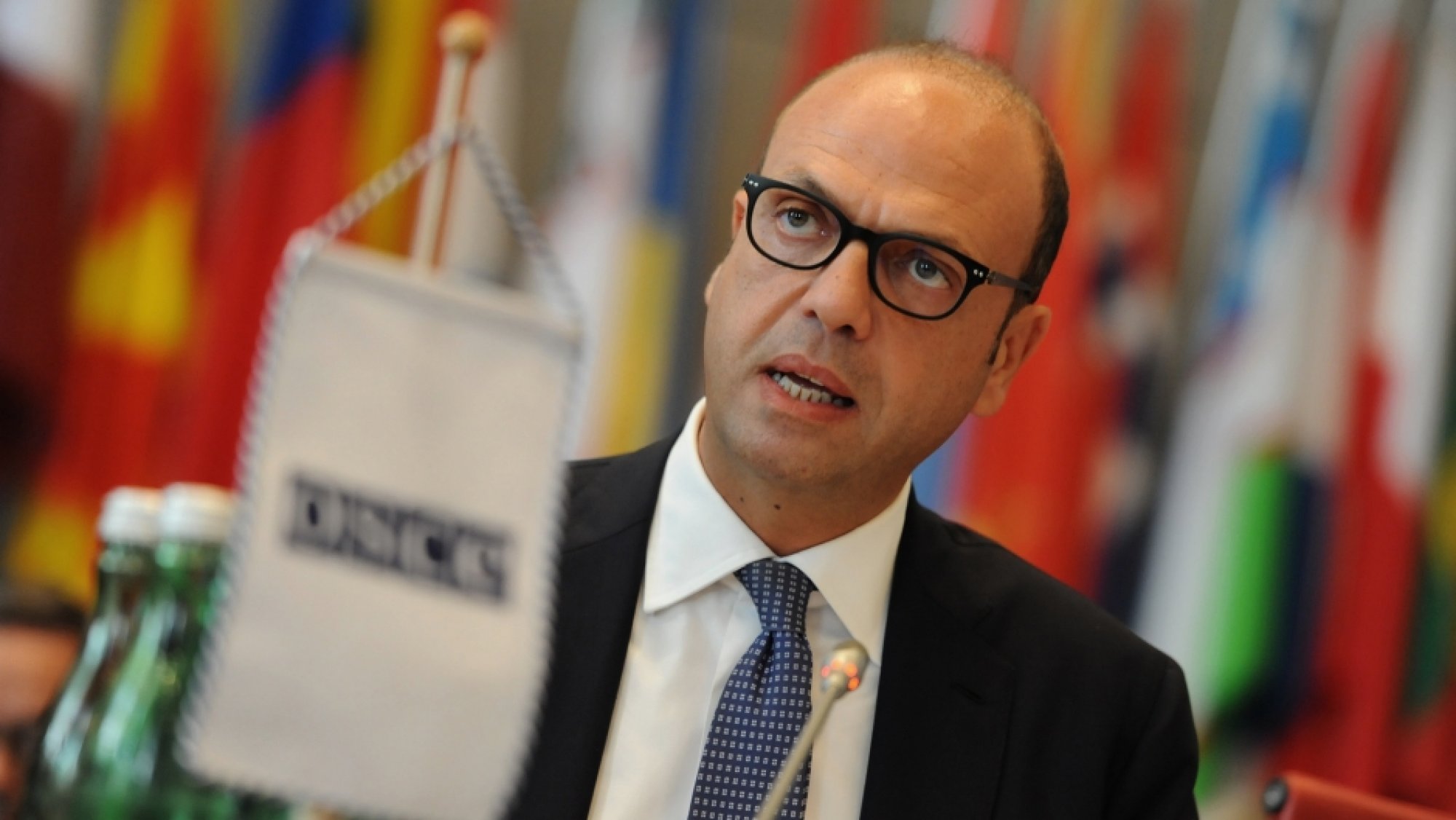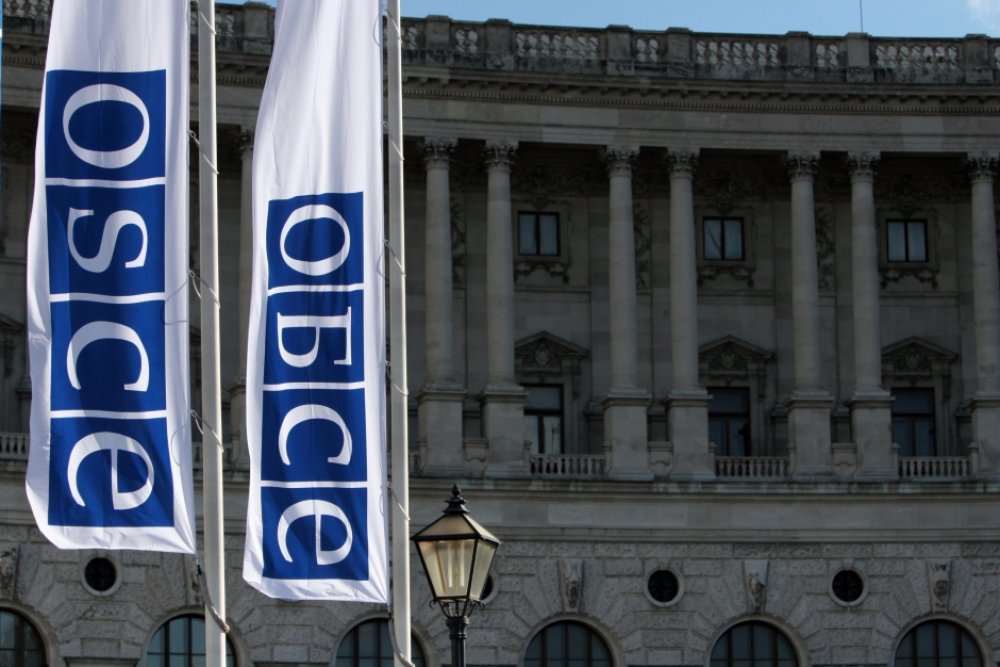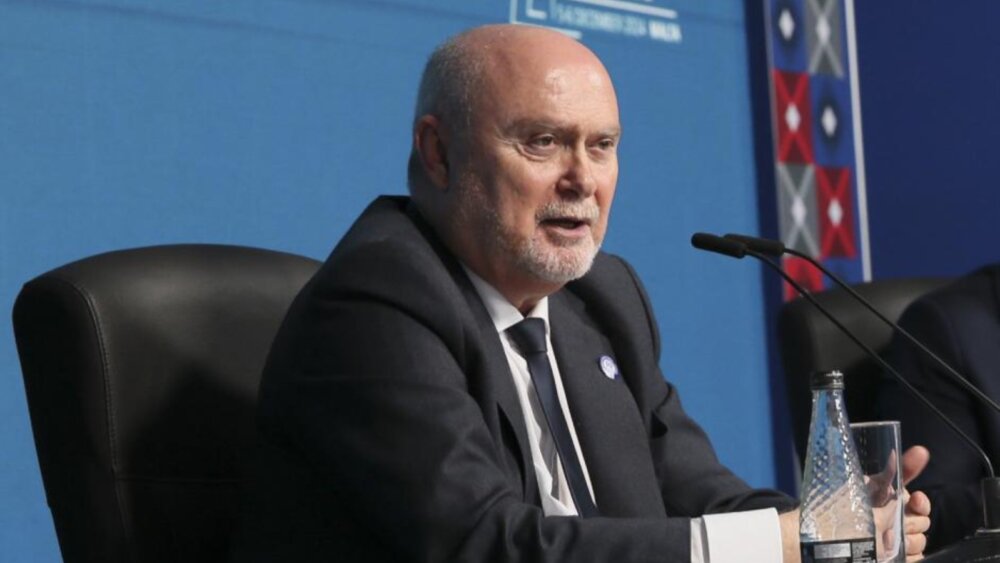OSCE/Micky Kroell

Three ways to reform the OSCE leadership model
During the détente years of the Cold War, the Conference for Security and Cooperation in Europe (CSCE) emerged as the only platform for dialogue between the Warsaw Pact countries and the West. When the Cold War came to an end, the CSCE was transformed into an Organization with permanent structures and renamed the OSCE in 1995.
Although, over the past 25 years, it has transformed from a Conference to an Organization, the OSCE is still considered an inter-state process. Hence, one of its participating States always serves as the Chair, which rotates on an annual basis.
An initial version of the institution of the Chairmanship-in-Office (CiO) can be found as early as 1973 in the Final Recommendations of the Helsinki Consultations and later in the 1992 Helsinki Summit Document. During the early times of the CSCE, the negotiation process was firmly in the hands of States, with one State holding the Chairmanship and presiding over the high-level consultations.
The role of the Secretary General was introduced at a later stage, for the first time in 1992 at the CSCE Stockholm Ministerial Council meeting. (Before that, from 1990 until 1992, there was a Head of the CSCE Secretariat in Prague).
As a result, the OSCE today operates within a dual leadership system consisting of the Chairmanship that rotates on an annual basis and a Secretary General (SG) who is appointed for three years with the possibility for a second term. Generally speaking, the OSCE Chairmanship’s role is considered political, whereas the OSCE SG serves as the Chief Administrative Officer. Hence, one interpretation is that the SG is seen as the secretary, while the Chairmanship is regarded as the general.
While rotating chairs also exist in the Council of Europe and the European Union, the difference is that these Organizations have large bureaucratic architectures to support the work of States, whereas the OSCE’s bureaucracy is comparatively small.
The situation within the United Nations (UN) is different again. At the UN, representatives of States assume the Presidency of the UN General Assembly for one year. Article 21 of the UN Charter states that “the General Assembly shall adopt its own rules of procedure. It shall elect its President for each session.” The Rules of Procedure of the General Assembly describe the President’s powers as mainly procedural without any political functions or powers.
On paper, the role and mandate of the UN Secretary General sounds almost identical to that of the OSCE Secretary General. The UN Charter describes the Secretary General as “Chief Administrative Officer” of the Organization, who shall act in that capacity and perform “such other functions as are entrusted” to him or her by the Security Council, General Assembly, Economic and Social Council and other United Nations organs. Article 99 of the UN Charter also empowers the Secretary General to “bring to the attention of the Security Council any matter which in his opinion may threaten the maintenance of international peace and security”. Yet, the role of the UN Secretary General was also shaped by different personalities in the course of the years. While the UN Secretary General does have to take into account the concerns of UN Member States, his political role has grown in the course of the years. The result is that today States expect the UN Secretary General to speak out and take action on all relevant matters of international peace and security.
At the OSCE this is not the case as the SG is kept in check by States and the Chairmanship. One could argue that this is still a leftover of the conference years of the CSCE. Hence, the OSCE’s leadership model is unique among international organizations.
Given the increasingly complex security challenges that have changed significantly since the CSCE and the Cold War, the question now needs to be asked whether this model is still up to date. Overall, the answer to that question is no. The current interpretation of mandates and leadership model leads to a number of problems that will be elaborated below. Some of the issues have been discussed at length on the Security and Human Rights Monitor before, see for example here.
What is needed is a broader and more flexible interpretation of the current mandates as well as some new ideas. Here are three suggestions.
1) Ensure strategic, long-term planning of OSCE activities and sharpen the OSCE’s profile and communication policy.
Currently, there is a strong impression that the OSCE works on a whole array of different and somewhat unrelated topics, from military security, to combating radicalization and terrorism, managing migration and improving economic connectivity. This is due to the fact that the countries holding the OSCE Chairmanship have the right to choose their own thematic priorities that they will work on during their one-year tenure at the helm of the OSCE.
The problem with that model is that Chairmanship priorities differ greatly from one year to the next, especially since they often reflect issues relevant to a State’s domestic audience or that are simply in line with the country’s national interests. This yearly changing, state-driven agenda gives the impression of an unfocused OSCE agenda.
To mitigate this, the OSCE Troika consisting of present, previous and succeeding Chairmanships should demonstrate greater continuity in their priorities. And the SG should be given the opportunity to introduce strategic, long-term substantive topics as part of a multi-annual budget process. Currently, the OSCE core budget is adopted on an annual basis, which not only leads to lengthy and cumbersome negotiations every year, but also does not provide for strategic, long-term planning of substantive issues.
Another related problem is the difficulty in establishing a clear and effective communication policy. Focusing on a number of core tasks that are worked on over a longer period of time could help to sharpen the OSCE’s profile and make it easier to explain the Organization’s achievements to the general public.
2) Ensure continuous, external representation of the OSCE and provide for crisis management.
According to the 2002 Porto Ministerial Council (MC) decision, the Chairperson-in-Office (CiO) is “responsible for the external representation of the OSCE”. Hence, the Foreign Minister of the country holding the Chairmanship will travel to crisis hotspots, meet with other Foreign Ministers, and be the face of the OSCE for one year.
However, this responsibility comes with a certain risk as in several instances Foreign Ministers had to step down in the past because elections were held and governments changed. This also happens to be the case with this year’s Chairmanship. Italy held elections on 4 March and no new government has been formed yet. From what it looks Italy will have to hold fresh elections. This means that the current CiO, Foreign Minister Angelino Alfano, has largely disappeared from the international stage as the OSCE’s public face as he currently lacks political clout. This is not only a problem for the external representation of the Organization but could potentially also lead to a leadership vacuum in the event that an acute crisis erupts in the OSCE area.
For this purpose, and especially in such events, the SG needs to be entrusted with a mandate to take on these functions. According to the 2002 Porto MC decision, the CiO shall be “assisted” by the SG “in order toensure effective and continuous working contacts with other international organizations and institutions”.
According to a decision adopted in 2011 at the Vilnius OSCE MC, the SG also has a broad mandate for early warning and for suggesting responses on how to deal with escalating tensions or conflicts in the OSCE area. Both of these passages and documents should provide the basis for the SG role, especially when the CiO is unable to assume his or her functions fully due to political reasons.
3) Make more use of double Chairmanship models in order to coordinate and synchronize Chairmanship priorities. Reform the selection process of countries holding the Chairmanship.
In 2011, Switzerland and Serbia successfully campaigned for a “double Chairmanship”of the OSCE for the years 2014 (Switzerland) and 2015 (Serbia). The two countries presented a joint work-plan with joint, overlapping priorities. This model proved to be successful and greatly helped to ensure continuity of substantive priorities from one year to the next. Such double Chairmanship models should therefore be introduced more often.
When it comes to the decision on which countries should hold the OSCE Chairmanship, it has become common practice to decide this three years in advance. This is, however, neither a formal nor an established rule. This is a problem because if – for whatever reason – there is no consensus on who will hold the Chairmanship, or the country in question loses interest in the Chairmanship, then the decision is postponed to a later stage.
This has happened last year when Norway, which had originally launched an official bid for the Chairmanship, withdrew its interest at the last minute after a change in government (reported here exclusively on SHR Monitor). As a result, it remains unclear who will chair the OSCE in 2020. This is problematic, as again, no advance planning and strategic preparation is possible. OSCE participating States should therefore consider to formalizing the selection process for OSCE Chairmanships.
In conclusion, the OSCE needs to adapt its leadership model, especially given the increasingly complex challenges and the worsening political climate in the OSCE area. For the OSCE to be successful and effective, participating States will have to embrace some reform issues and be open to a broader interpretation of existing mandates. In addition, they should demonstrate greater leadership and ownership by showing an interest in chairing the Organization, and investing the political capital needed to unleash the OSCE’s true potential at a time when cooperative security is essential.
Further reading:
To trace the evolution and development of the role of the Chairmanship-in-Office and of the Secretary General, consult both editions of ‘The Conference on Security and Co-operation in Europe, Analysis and Basic Documents’, 1972-1993, 1993-1995, Edited by Arie Bloed, Martinus Nijhof Publishers and Kluwer Academic Publishers, 1993, 1997.
Dual leadership: Dysfunctional or mutually supportive? By Jan Kubis, Helsinki Monitor, Volume 16, Issue 3, 2005, http://booksandjournals.brillonline.com/content/journals/10.1163/1571814054740841
The OSCE Chairmanship – Captain or Figurehead? By Walter Kemp, Security and Human Rights Journal, Volume 20, Issue 1, 2009, https://www.shrmonitor.org/assets/uploads/2017/09/3-Kemp.pdf
A permanent Swiss Chairmanship for the OSCE? By Maximilian Stern and David Svarin, Security and Human Rights Monitor, 25 June 2014, https://www.shrmonitor.org/guest-blog-entry-permanent-chairmanship-osce/
A permanent Swiss Chairmanship for the OSCE – a viable suggestion? By Stephanie Liechtenstein, Security and Human Rights Monitor, 28 July 2014, https://www.shrmonitor.org/permanent-swiss-chairmanship-osce-viable-suggestion/
Strengthening the OSCE’s political leadership, By Stephanie Liechtenstein, 28 July 2014, Security and Human Rights Monitor, https://www.shrmonitor.org/strengthening-osces-political-leadership/
In Switzerland’s shadow: Summing up Serbia’s 2015 OSCE Chairmanship, By Christian Nuenlist, 11 December 2015, https://www.shrmonitor.org/switzerlands-shadow-summing-serbias-2015-osce-chairmanship/



Comments
* Your email address will not be published